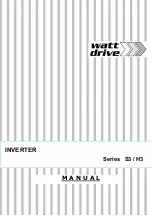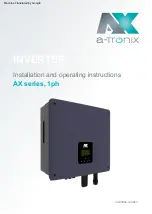
931054C / 1213
5. DISPLAY FEATURES
27
5.2. Two Spectrum Displays
The Full and Expanded Display Windows show, respectively, a complete histogram of the cur-
rent spectrum (whether from an MCS or the buffer) and an expanded view of all or part of the
spectrum. These two windows are the central features of the MCS-32 screen. All other windows
and most functions relate to the spectrum windows. The Full Display Window shows the entire
data memory of the MCS as defined in the configuration. In addition, it has a marker box show-
ing which portion of the spectrum is displayed in the Expanded Display Window.
The Expanded Display Window contains a reverse-color marker line at the horizontal position of
the pixel representing the marker channel. This marker can be moved with the mouse pointer, as
described in Section 5.4.1, and with the <
7
>/<
6
> and <PgUp>/<PgDn> keys.
Note that in both spectrum windows the actual spectrum is scaled to fit in its window as it
appears on the display. Also, since both windows can be resized, it follows that the scaling is not
always by powers of two, nor even integral multiples. Therefore, MCS-32 uses algorithms to
scale the window properly and maintain the correct peak shapes regardless of the actual size of
the window. The vertical scale in the Full Display Window is always logarithmic. In the
Expanded Display Window, use the menus, right-mouse-button menu, accelerator keys, and
Toolbar to choose between logarithmic and linear scales, change the horizontal or vertical axes,
and select which region of the spectrum to view.
Depending on the expansion or overall size of the spectrum, all or part of the selected spectrum
can be shown in the expanded window. Therefore, the number of channels may be larger than
the horizontal size of the window, as measured in pixels. In this case, where the number of
channels shown exceeds the window size, all of the channels cannot be represented by exactly
one pixel dot. Instead, the channels are grouped together, and the vertical displacement corre-
sponding to the maximum channel in each group is displayed. This maintains a meaningful
representation of the relative peak heights in the spectrum. For a more precise representation of
the peak shapes displaying all available data (i.e., where each pixel corresponds to exactly one
channel), the scale should be expanded until the number of channels is less than or equal to the
size of the window.
NOTE
The marker can be moved by no less than one pixel or one channel (whichever is
greater) at a time. In the scenario described above, where there are many more memory
channels being represented on the display than there are pixels horizontally in the
window, the marker will move by more than one memory channel at a time, even with
the smallest possible change as performed with the <
6
> and <
7
> keys. If true single-
channel motions are required, the display must be expanded, as described above.
Summary of Contents for Easy-MCS
Page 10: ...x...
Page 20: ...Easy MCS Multichannel Scaler and MCS 32 A73 B32 Software 931054C 1213 10 Intentionally blank...
Page 24: ...Easy MCS Multichannel Scaler and MCS 32 A73 B32 Software 931054C 1213 14 Intentionally blank...
Page 77: ...931054C 1213 7 KEYBOARD FUNCTIONS 67 Fig 59 MCS 32 Keyboard and Keypad Accelerators...
Page 98: ...Easy MCS Multichannel Scaler and MCS 32 A73 B32 Software 931054C 1213 88 Intentionally blank...
Page 100: ...Easy MCS Multichannel Scaler and MCS 32 A73 B32 Software 931054C 1213 90 Intentionally blank...
Page 108: ...Easy MCS Multichannel Scaler and MCS 32 A73 B32 Software 931054C 1213 98 Intentionally blank...
Page 110: ...Easy MCS Multichannel Scaler and MCS 32 A73 B32 Software 931054C 1213 100 Intentionally blank...
Page 114: ...Easy MCS Multichannel Scaler and MCS 32 A73 B32 Software 931054C 1213 104 Intentionally blank...
Page 130: ...Easy MCS Multichannel Scaler and MCS 32 A73 B32 Software 931054C 1213 120 Intentionally blank...
















































